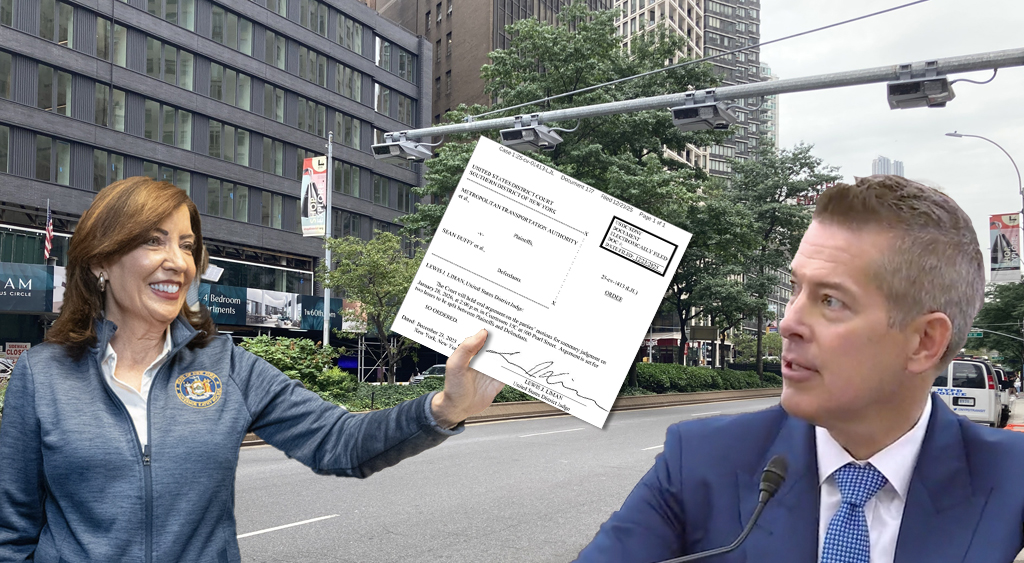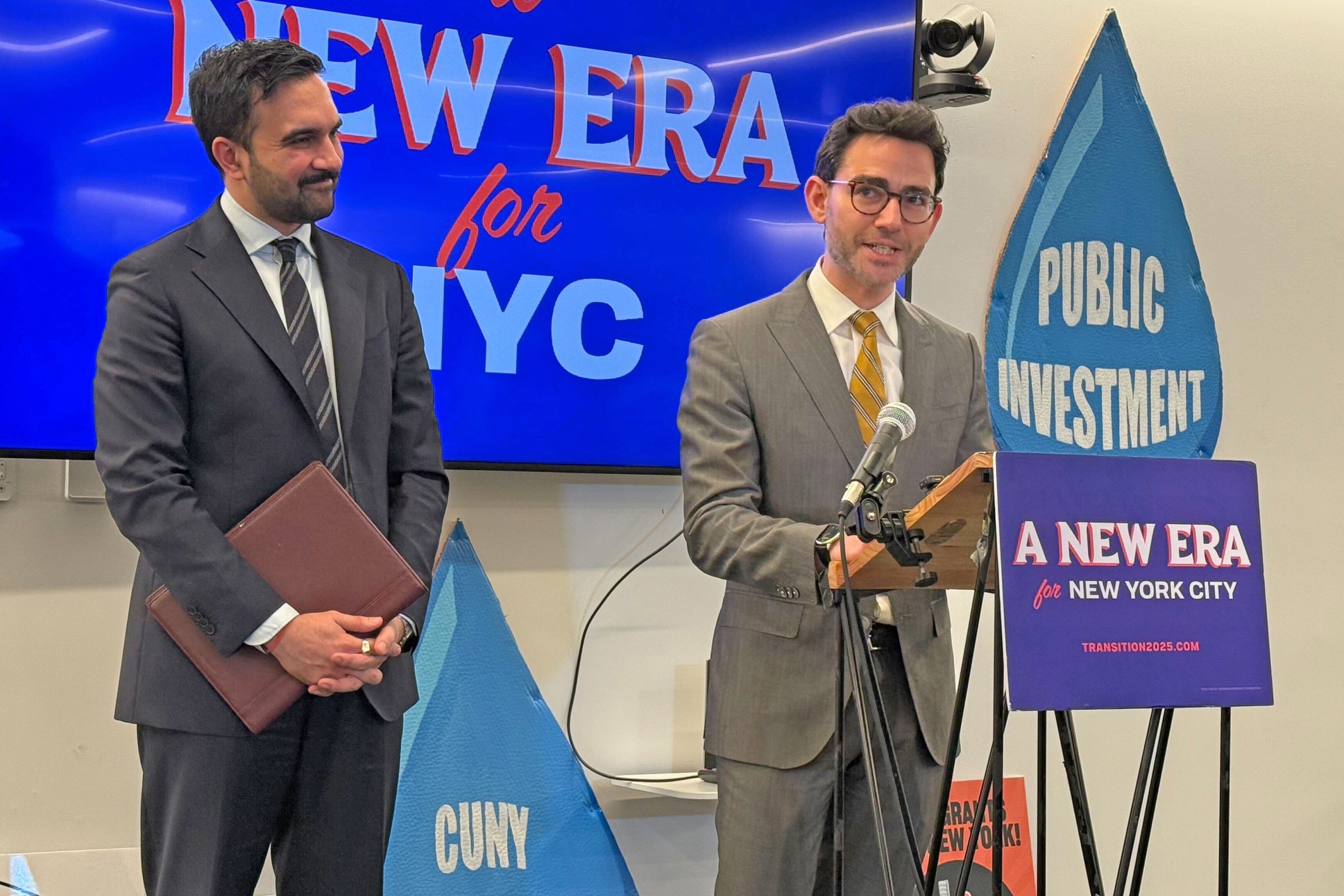Are congratulations or condolences in order for Sean Duffy?
Late last week, the U.S. Transportation Secretary announced a federal takeover of the biggest transportation planning mess in North America: fixing Penn Station. Getting this project right will require a million little details, but one big decision from the start: figuring out what Penn Station should be.
The Penn Station we have today is the result of 50 years of political sparring since the Reagan Administration de-centralized rail service and planning, which resulted in failures to fund and upgrade key rail lines that feed Penn Station from New Jersey.
Fixing Penn Station requires fixing each of these interlocking obstacles, which requires understanding how exactly we ended up in this intractable mess in the first place — and it will take time, planning and patience, none of which are common in American politics.
I have spent years as a journalist and academic fellow studying the region's transportation systems, of which Penn Station, its history, the aborted overhauls and the current, now-dead, plans were unavoidable. So I guess it falls on me to be ... The Explainer:
So what's wrong with Penn Station?
The problems at Penn Station relate to both function and form.
The function are the platforms inherited from the original Penn Station (the one that was torn down in the greatest act of architectural vandalism the city has ever seen). These platforms are too narrow to safely hold the number of people using the trains today. That means passengers must come down the stairs from the concourse to board — and that process can only be done after the trains are emptied, which slows things down. The longer this takes, the fewer the number of trains you can move through Penn Station.
To fix this, Duffy will have to fix the platforms.
The second set of problems relate to the station's form. After the original McKim, Mead & White head house was knocked down, it was replaced by Madison Square Garden and an office tower, 2 Penn Plaza. This is a major contributor to the low ceilings and claustrophobic feeling, which is predominately found in the Amtrak and New Jersey Transit wings of the station. (We hate to remind Sean Duffy, but the MTA that he says is incompetent overhauled the Long Island Rail Road piece of the complex — and it was widely hailed).
The project that Duffy has now taken over had elements addressing both form and function.
First, form: The MTA would lead a rebuild of the existing complex above the platforms, which would consolidate the split-level concourses onto one floor with much higher ceilings. This was called Penn Reconstruction and it was expected to cost about $7 billion.
Second, function: Amtrak didn't want to rework the existing platforms to fix the width issue, so, instead, the railroad favored building a large wing to the south of the station with up to a dozen new tracks that would be predominately used by New Jersey Transit. This project would expand the station's capacity, but would require condemning part or all of three city blocks and was expected to cost $17 billion, none of which was funded.
The grand total for all of this work would potentially be $24 billion.
So what did Sean Duffy say he wants?
First and apparently foremost, he said he was saving the American taxpayer by pulling the federal grant to help pay for the engineering work involved with Penn Reconstruction and consolidating that program under Amtrak's management.
"President Trump has made it clear: the days of reckless spending and blank checks are over," Duffy's statement read. "New York City deserves a Penn Station that reflects America’s greatness and is safe and clean. The MTA’s history of inefficiency, waste, and mismanagement also meant that a new approach is needed."
Duffy's statement claimed he was saving taxpayers $120 million. The MTA's grant was for $70 million; so there's some fuzzy math afoot. Duffy's press release did say Amtrak's grant had been downsized, too, but the scope of what Amtrak is being asked to assess has grown, so that seems contradictory.
Why is Duffy getting involved?
Since taking his position, Duffy has leaned into punching New York, President Donald Trump's erstwhile home state, as frequently as possible. (Trump's relationship with New York is probably best described as tortured, and if you want a deep dive into it, I highly recommend Maggie Haberman's book.)
Duffy attempted to pull the federal approvals for the MTA's successful congestion pricing program, a matter now in court. He's also taken to regularly appearing on conservative media — primarily Fox News — to bash the subways as crime-ridden. The stats show that crime is down about 15 percent year-over-year. The details of this portrait below the headline figure are important. In raw figures, it's below where it was before the pandemic struck. On a per capita basis, it's even or above where it was pre-pandemic because ridership is still at about 80-85 percent of normal. Pickpocketing is down, but violent attacks are up. Gov. Hochul has provided Mayor Adams and his NYPD with a boat-load of cash to pay for overtime patrols.
So far this year, there have been no homicides on the system.
Duffy recently came to New York and rode two stops on the B-train with Hizzoner — again, the person who's actually in charge of policing the subways — during which he didn't see any crime. After that short trip from DeKalb to Broadway-Lafayette, he started hammering the old saw that the MTA is mismanaged, wasteful and inefficient.
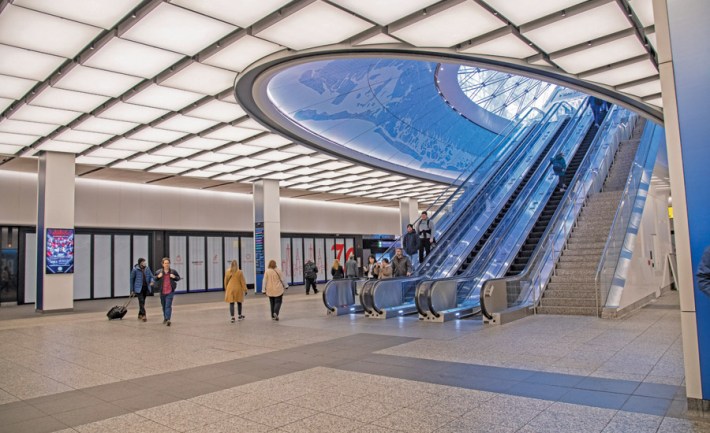
That's both true and not true. Much of the MTA's costs come from labor deals protected by both Democrats and Republicans in Albany, not from MTA management decisions. (If that interests you, dive in here.) And it's worth noting that MTA's Metro-North and Long Island Rail Road already meet the design criteria for high-efficiency rail service, which neither Amtrak nor NJ Transit do.
Anyways, the whole situation has a "heads, I win; tails, you lose" feel of intellectual dishonesty to it.
Why do we need to fit more trains into Penn Station?
The $16-billion Gateway project is building new tunnels under the Hudson River that will double the number of trains that can be carried into Manhattan (provided the second Portal Bridge gets built). However, those trains will need a place to go, and the current configuration of Penn Station cannot fit them. (The good news is that there is some time; the Gateway project won't be fully wrapped up until 2038.)
So what have we been fighting over?
The current war over Penn Station is two separate battles. There is a southern front, the fight over the proposed expansion; and a central front, over Madison Square Garden, and how its presence shapes whatever reconstruction can take place.
Let me guess, these fights are interconnected.
Yes, they are. Reconstructing Penn Station without fixing the platforms effectively locks the platforms into their current configuration — which is a giant choke point for the station's capacity — likely for another century, likely forcing a major station expansion.
However, fixing the platforms is extremely difficult and expensive as long as Madison Square Garden is on top of Penn Station because the support columns for the arena are drilled into the platforms. Any project would need to shore up MSG as it reworks Penn Station's foundational structures, an engineering feat of ballet-level precision lest you bring the arena crashing down onto the tracks.
Moving Madison Square Garden involves making a deal with the arena's owner, James Dolan, who is an heir to the Cablevision fortune and owns both the New York Knicks and the Rangers.
Amtrak's $24-billion plan dodged this particular bullet by leaving MSG in place and knocking down the block to the south.
That's easier than making a deal with James Dolan?!
For everyone not familiar with perhaps New York's most mercurial personality: Potentially, yes.
So, the railroads wanted to spend $24 billion to avoid a fight with Dolan?
As with all things in the quagmire that is Penn Station, that is only a piece of the puzzle. To understand the full story, we need to dive into the history of railroading in the region, which is a crucial part of why Penn Station is, well, the Penn Station of today.
If Duffy and Trump want to avoid the pitfalls that have sunk so many past efforts to fix Penn Station, learning from this history will be key.
The slow-motion collapse of the Pennsylvania Railroad essentially cleaved apart the management — and crucially, the funding — of the lines feeding into Penn Station. New York State bought the Long Island Rail Road from the Pennsylvania Railroad in the mid-1960s when it was hard up for cash. That was also the rationale that led the Pennsy to allow for the demolition of the classic but-then decrepit Penn Station waiting hall and make room for Madison Square Garden and 2 Penn Plaza to be constructed overhead.
The entire industry was ailing and in a last-bid effort to rescue both the Pennsylvania Railroad and the New York Central, they were merged together and took over a third failing line, the New Haven & Hartford, all of which combined to make Penn Central. It would be the biggest corporate collapse for decades to come. The whole system was all-but-nationalized in the 1970s, with freight and commuter rail services operated by Conrail and intercity services operated by Amtrak. An effort to have Amtrak essentially take over the commuter rail functions flamed out in the early 1980s amid stiff opposition from the then-Reagan administration and each state was left to either run the lines or shut them down. This is a very abbreviated version of the creation story of New Jersey Transit's rail services and the MTA's Metro-North, which took over the Grand Central-bound lines.
The result is system fractured to the point of being almost nonsensical: Amtrak, the smallest operator at Penn Station, owns the station, the approaches from the east and the west; and New Jersey Transit's busiest line, the Northeast Corridor, and the Hell Gate Bridge. The MTA owns the biggest railroad at Penn Station, the LIRR; the six subway lines that feed the LIRR, NJT and Amtrak at Penn Station; and, along with the state of Connecticut, the New Haven Line, which the Hell Gate feeds.
All of these agencies answer to different constituencies (Long Island vs. New Jersey vs. the Northeast Corridor traveler); all of them have different funding sources (New York has a myriad of taxes to fund the MTA; New Jersey recently passed a tax and a major fare hike, but NJT was starved for years; Amtrak's struggle to secure regular funding, particularly when either Congress or the White House have been controlled by Republicans is well-documented).
TL;DR: What does it all mean?
The result of this history is that Penn Station is siloed and has capacity constraints.
The LIRR runs trains in from the east to its tracks on the northern end of the station, those trains then exit to the West Side Yards where they get ready to make the return trip. All of the time-consuming stuff takes place in the yard, and outside of the station. By Penn Station standards, the LIRR is the most efficient operation there.
Amtrak's trains pass through the station from east-to-west using the central tracks of the station that link the Hudson River and East River tubes together. However, Amtrak's trains spend a lot of time in Penn Station because that's where the railroad schedules often have the Acelas passing the slower Northeast Regional trains.
NJ Transit's trains often use the stub-ended platforms at the southern end of the station and then back out to get back to New Jersey, but the process of getting the train's ready for their return trip can take upwards of 20 minutes, documents show.
Opponents of southern expansion of Penn Station have demanded the railroads look for ways to boost the efficiency of the current complex — and typically zero in on both Amtrak and NJ Transit's operations. They typically propose a two-step program to boost the capacity of Penn Station by reducing the amount of time trains need to spend in Penn Station.
The first half of the program generally involves rearranging the platforms: removing some platforms to widen others. The second half typically calls for the linking together the LIRR and NJT services so that NJT's trains can keep running out to the north or the east. For example, a NJ Transit train from Trenton would continue on to either Jamaica or Hicksville or New Rochelle; or an LIRR train would continue on to Trenton, etc. They also typically have Amtrak just run the trains through, instead of holding them at Penn Station for 20-30 minutes.
These proposals — and there are at least two major ones — are typically called through-running.
Is through-running something that's actually being considered as part of this rethink?
The memorandum that accompanied Duffy's statement imply that it may be.
It states that the Federal Railroad Administration "will work with Amtrak to assess and evaluate regional service options to identify improvements with the goal of optimizing service and recognizing fiscal constraints."
"Regional service options" and "optimizing service" are typically phrases that are used by through-running boosters, though the memo does not explicitly mention the concept.
Everything above the platforms: The head house fight
The meat of why Penn Station is so dysfunctional lies in the platforms and the operations of the complex. But much of the attention over the years has been focused on what's above them. Architects called the decision to level the old facility and replace it with MSG an act of civic "vandalism." The arena sealed off the station from natural light. "One entered the city like a god; one scuttles in now like a rat," wrote a historian.
New Yorkers have been debating the matter of Penn Station and MSG ever since. There are three plans that have been floated recently.
First, there is the MTA's proposed Penn Reconstruction that Duffy axed. That project featured a Modernist and open-aired design like the one found in the LaGuardia Airport rebuild. It proposed cutting through the unused cab way and reworking the Madison Square Garden sky bridge to allow for sunlight to re-enter the station, and was staunchly opposed by James Dolan. The estimated cost was about $7 billion.
Second is a proposal brought an Italian conglomerate, ASTM, which hired former MTA chairman Pat Foye to help make its case. ASTM's proposal would swap the MTA's skybridge idea for a grand entrance along Eighth Avenue where the MSG Hulu Theater now stands. The Italians would pay James Dolan $500 million for the right to buy it. Unsurprisingly, Dolan was much more of a fan of this idea, while the MTA bashed it as a giveaway. It was also more expensive than the MTA's proposal at $8 billion.
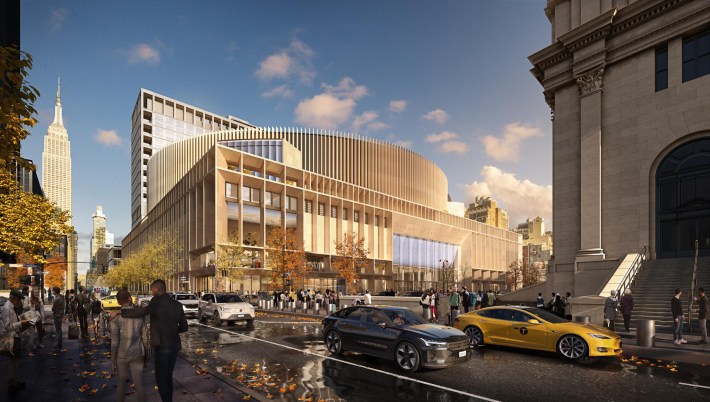
Third is a proposal backed by a major Trump donor, Thomas Klingenstein, dubbed "Grand Penn." It would build a new Madison Square Garden across Seventh Avenue, which it estimates would cost $3.5 billion. It would ring 2 Penn Plaza with a classically styled artifice to provide the station with a more prominent position on the city's streetscape and transform the space currently taken by Madison Square Garden into a park with a large fountain. The underground concourses would also be consolidated into a single level. Klingenstein's group claims the station portion would cost just $4 billion once MSG is pulled off the top of it. It puts the total price tag at $7.5 billion, which is roughly equal with what the MTA and ASTM came up with while leaving MSG in place.
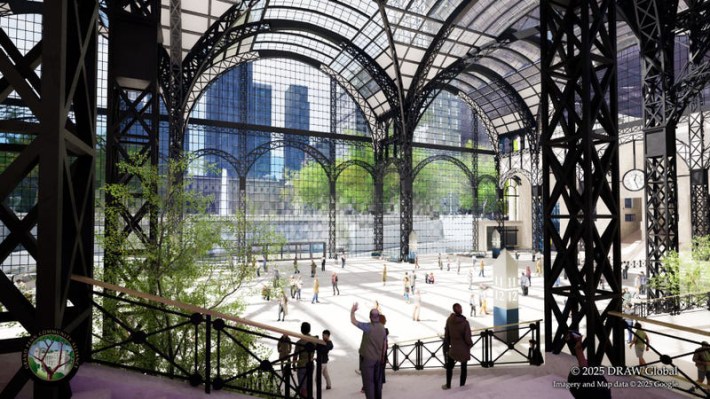
Importantly, this proposal does not appear to tackle the Penn Station platforms. However, that would be made easier by finally getting MSG to move. And it would look nice, which may be the only thing Trump cares about (and, cannily, that's exactly how Klingenstein pitched it to him, under the headline, "Only Trump Can Make Penn Station Great Again").
Would Dolan actually move?
There have been a ton of proposals to move Madison Square Garden over the years because everyone agrees that it makes working on the underlying transit hub much harder. Each time, Dolan has refused.
Why would that change now? Well, the architect hired by Grand Penn, Alexandros Washburn, told The New York Post: "[I]f there’s one person on planet Earth that can talk to Jim Dolan, it’s Donald Trump."
Is there money for any of this?
Not anymore! After Duffy grabbed Penn Reconstruction from the MTA, Gov. Hochul gleefully announced that she was pulling the $1.3 billion New York State pledged to help fund it. If the project's design is back to square one, the funding is back to square zero.
The good news for Sean Duffy is that there is a way forward.
The bad news for Duffy is that the MTA already wrote the playbook for what needs to be done to fix Amtrak's Penn Station — and cribbing from that playbook won't be cheap.
Here's hoping for Duffy's sake that crow tastes like chicken.




